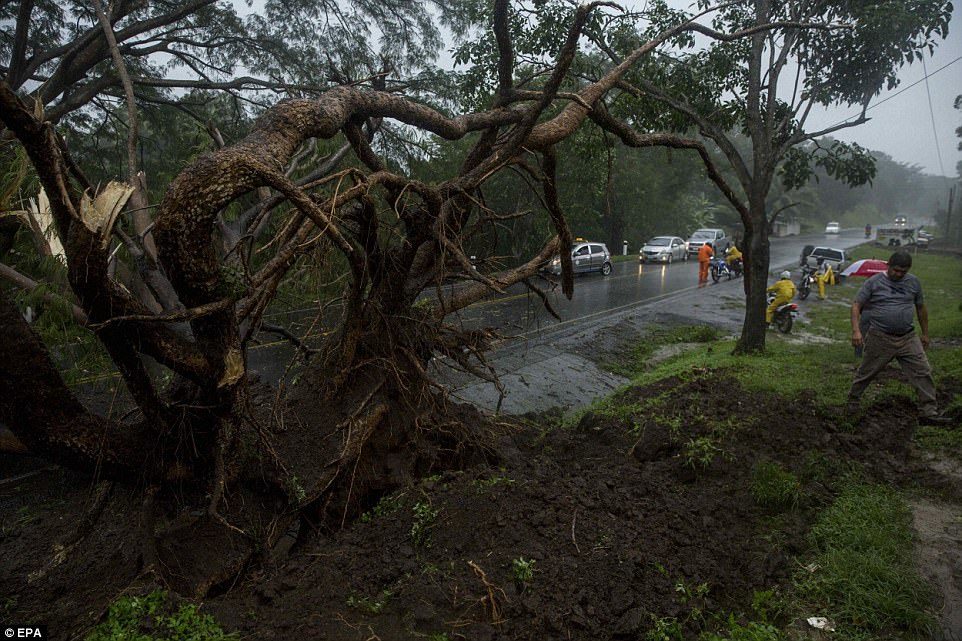
At least 22 have died in Costa Rica, Nicaragua and Honduras as torrential rains uproot trees, knock out bridges and turn roads into rivers.
The storm is heading for the US Gulf Coast where it is expected to strike as a Category 1 hurricane on Sunday.
Storm or hurricane watches have been issued from Louisiana east through Mississippi and Alabama, with a state of emergency declared in 29 Florida counties, the US National Hurricane Center said.
A spokesman added: 'The threat of the impact is increasing, so folks along the northern Gulf Coast should be paying attention to this thing.'

Emergency officials in Costa Rica reported that at least eight people were killed due to the lashing rain, including two children. Another 17 people were missing, while more than 7,000 had to take refuge from Nate in shelters.
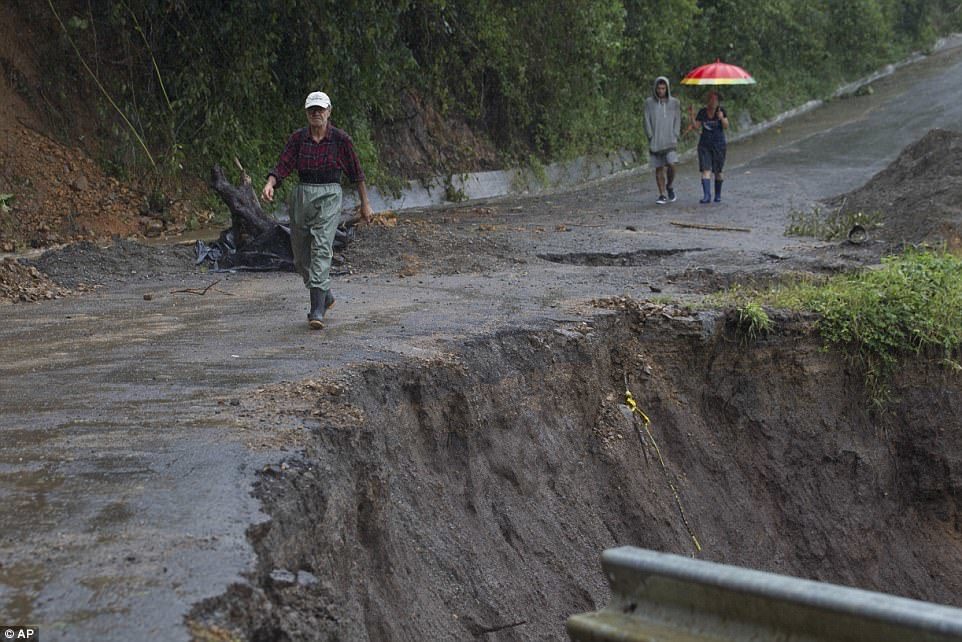
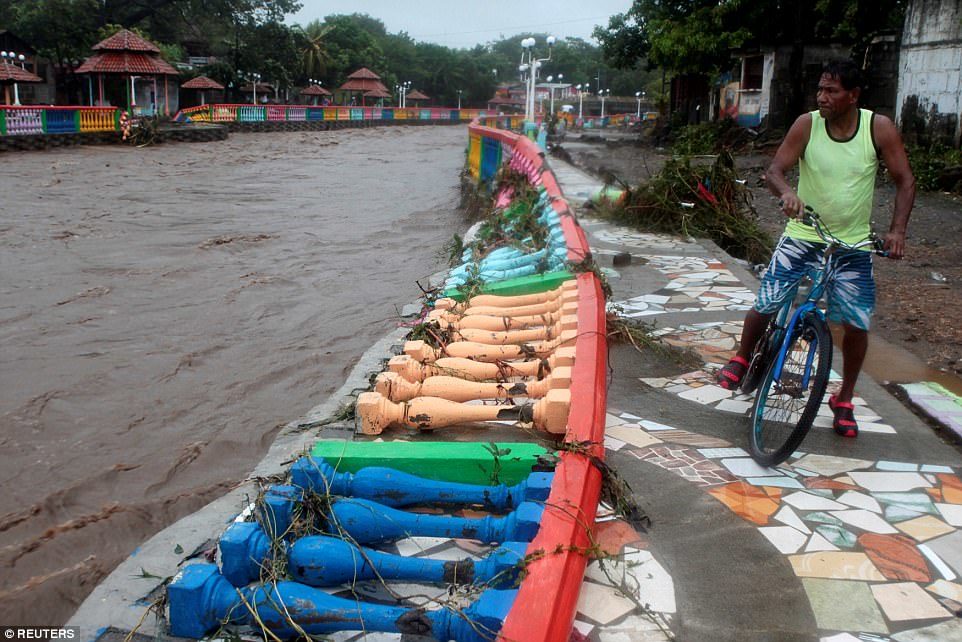
'Sometimes we think we think we can cross a river and the hardest thing to understand is that we must wait,' Nicaragua's Murillo told state radio, warning people to avoid dangerous waters. 'It's better to be late than not to get there at all.'
Costa Rica's government declared a state of emergency, closing schools and all other non-essential services.
Highways in the country were closed due to mudslides and power outages were also reported in parts of country, where authorities deployed more than 3,500 police.
In Costa Rica people have had to abandon their homes because of flooding and the risk of unstable ground giving way, the director of the National Emergency Commission, Ivan Brenes, said.
At least 18 main roads were closed and another dozen were only partially open. In Costa Rica's northwest Guanacaste region popular with tourists many roads were so flooded as to be impassable to all but four-wheel-drive vehicles and horses.
An alert was also issued for people to be wary of crocodiles that might be roaming after rivers and estuaries flooded.
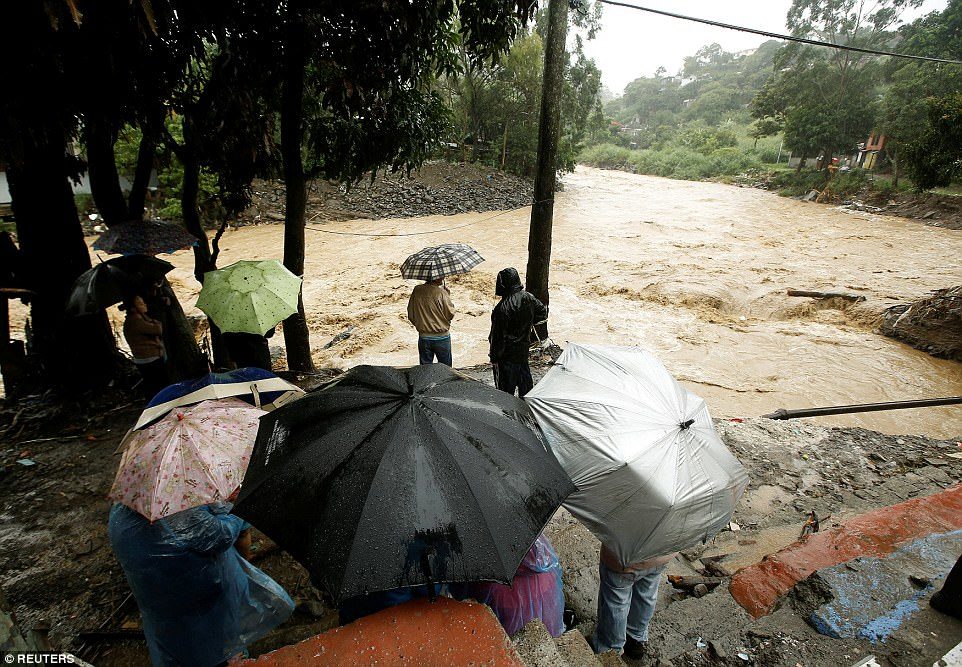
Costa Rica's main international airport was open, but with multiple flight cancellations and delays.
The annual rainy season is currently underway in Central America, a five-month period typically ending in November in which the risk of flooding and mudslides rise.
This year's has been intense, with some areas in the region getting up to 50 percent more rain than average for September and October.
The United States is recovering from two major hurricanes: Hurricane Harvey that tore through Texas in August, and Hurricane Irma in September.
Another powerful storm, Hurricane Maria, ripped through the Caribbean in late September, wreaking destruction on several islands, including Dominica and Puerto Rico.
Sources: Reuters and AFP
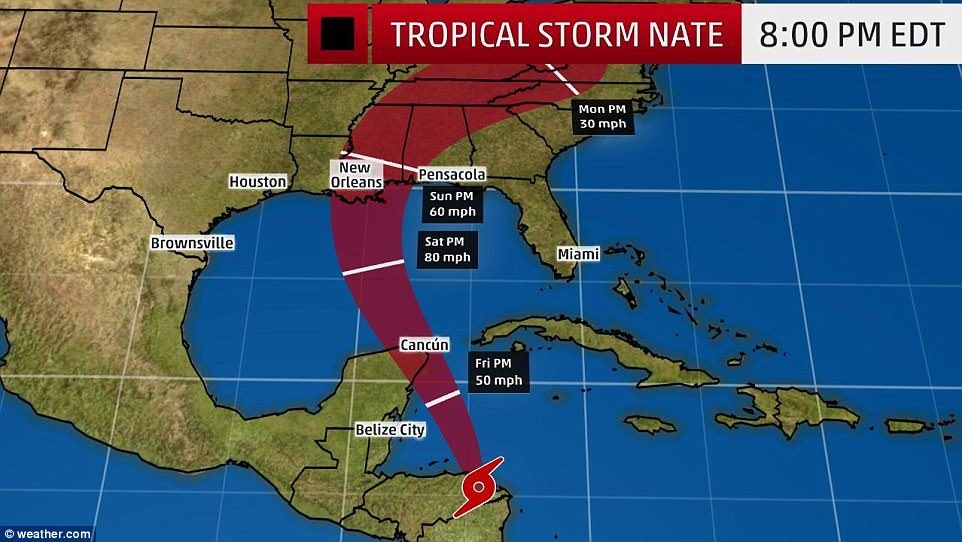
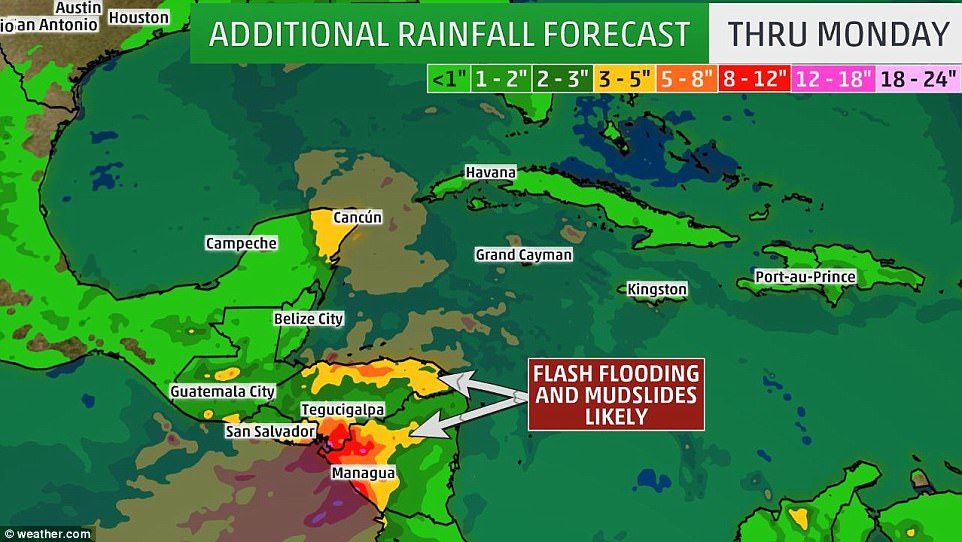



Comment: Nate updates below:
Florida is under a state of emergency as Nate approaches. Governor Scott issued the order to ensure local governments have enough time to prepare, just in case. (Current predictions put the storm on a course west of Florida.)